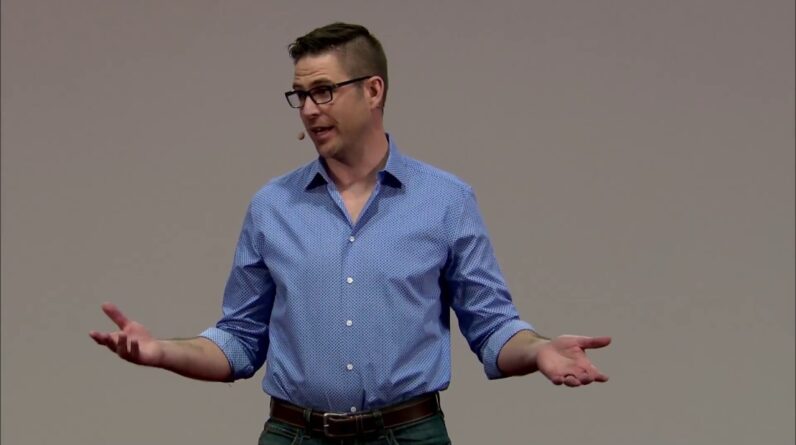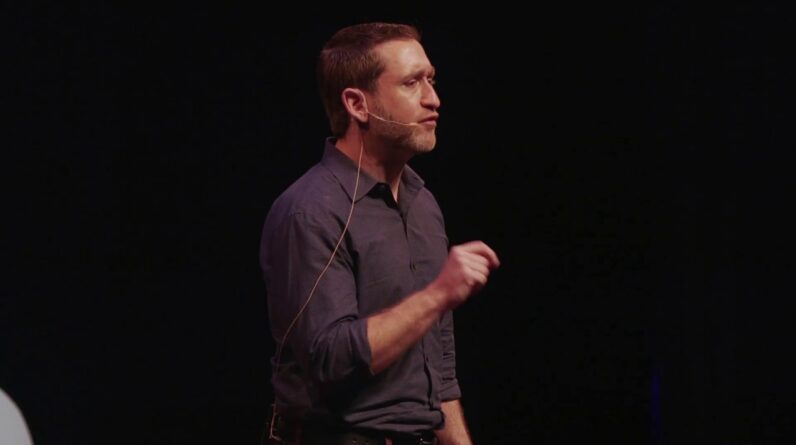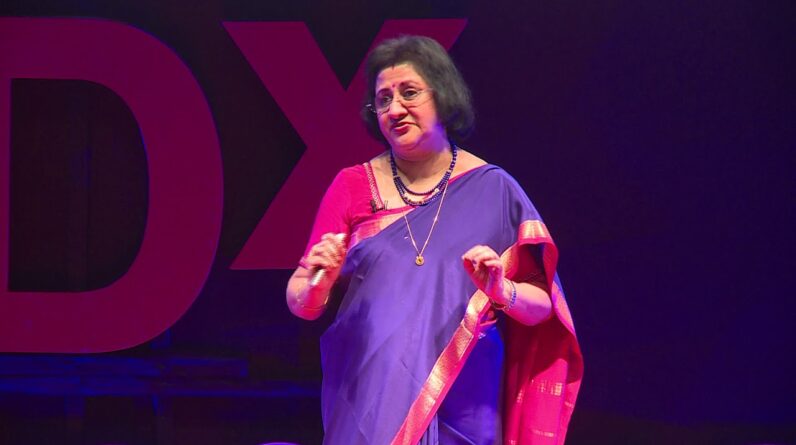Simon Sinek presents a simple but powerful model for how leaders inspire action, starting with a golden circle and the question “Why?” His examples include Apple, Martin Luther King, and the Wright brothers — and as a counterpoint Tivo, which (until a recent court victory that tripled its stock price) appeared to be struggling.
The TED Talks channel features the best talks and performances from the TED Conference, where the world’s leading thinkers and doers give the talk of their lives in 18 minutes (or less). Look for talks on Technology, Entertainment and Design — plus science, business, global issues, the arts and more. You’re welcome to link to or embed these videos, forward them to others and share these ideas with people you know.
How Great Leaders Inspire Action
Why is it that some people are more prone to take risks than others? This article will explore the ‘Why’ behind great leadership. By focusing on why a leader takes risks, he aims to inspire others to take risks, too. Ultimately, success is about achieving a higher purpose, not about what they are doing. This article will help you determine your ‘Why’ and make a conscious decision about the steps you need to take to achieve it.
‘Why’ is the reason for success
A book entitled “Start With Why” by Simon Sinek explains the power of starting from the why. Great leaders inspire others to do great things. This book is a must-read if you want to learn how to be the best at what you do. It will make you a better leader, and it can inspire you to take action. Here are some ways to start with your why. Listed below are three ways to get started:
A clear WHY is the first step toward inspiring others to do great things. Without a clear WHY, a product or movement will fail to motivate followers. Great leaders think and act similarly. They follow the “Golden Circle” of leadership. The three steps are:
The reason that people do not believe in the why is because they are judging results based on the how, not the why. While some leaders may be highly successful, others fail time and again, based on the same reasons. For example, “the company’s mission statement is the reason why the company is successful.” However, many people fail to see the importance of their WHY. They tend to focus on their goals instead of their “why”.
A great leader must first determine why they want people to act, and then motivate them to execute on that vision. Without a clear ‘why’, a team isn’t a team. As Sinek points out in his book “Start With Why”, the ‘why’ factor is more important than ‘how’ and ‘what’. As Simon Sinek explains, the ‘why’ is the foundation for the ‘how’ of Mission Command.
How
The idea of the “Golden Circle” is one that captivates us. It’s an idea that many great leaders use to inspire action in their followers. But how do we use it? This TEDx talk by Simon Sinek reveals how great leaders inspire action and change. This theory is applicable to politics, business, marketing, and more. Let’s look at some of its principles. What do these leaders have in common?
The first step in inspiring action is building trust. When a leader aims to motivate others, they must provide an “invisible net” or “circle of safety.” This makes people associate with great leaders because they feel protected and are not just focusing on numbers. In addition, great leaders must demonstrate empathy. The Microsoft CEO Satya Nadella mentions the importance of empathy in order to build trust.
People buy what they believe. Their actions prove their beliefs. The person who purchased the iPhone in the first six hours had certain beliefs about the world and wanted to be noticed. This is an example of how great leaders inspire action. However, it’s important to recognize that not all leaders have this mindset. For example, some people are uncomfortable making intuitive decisions and don’t try new products before someone else. These people make intuitive decisions based on beliefs and not rational considerations.
Social movements are driven by people. People who hear a vision for a better future become involved, make it their own, and become the leaders in their community. They then spread the message to others. So if a social movement is based on a vision, it’s probably the case that the vision is not being spread enough. A leader can be successful, but they must be able to inspire action.
What
Throughout his life, Simon Sinek has studied the great leaders of the world and codified what makes them great. Today, he teaches graduate courses in strategic communication at Columbia University and is the author of three books, including the bestseller “Start With Why.” His TED Talk is a good example of this. In the book, he explores the importance of being an inspirational leader. Having a “why” helps you define the purpose of your business and attract the people who are most important to you.
The greatest leaders inspire action by addressing people’s WHYs. People will buy into a product or movement only if they know WHY and are passionate about it. But while the world may be willing to listen to someone who believes in the cause, it won’t buy into it unless they can relate to it. In the same way, those who are most inspiring are similar to those who have the most followers. This is called the “Golden Circle” theory.
The “Golden Circle” is a simple model of inspirational leadership. It explains why some leaders inspire action while others aren’t as motivated. The Golden Circle works along the logic of WHY-HOW-WHAT. In other words, every organisation knows WHAT they do, but few understand WHY. Sadly, many organisations have forgotten this important step and instead focus on what they do rather than why. This is where Sinek’s “Why” comes in. A good example of this is Apple. The company’s mission is to challenge the status quo. Then, its products are well-designed.
In addition to inspiring action, Sinek’s “Golden Circle” also teaches us to develop an inner circle. In this context, we need to hire people who are passionate about our mission. People who have an inner circle of believers have the best chance of fostering a sense of purpose. The “Why” is the emotional core of human behavior and is responsible for most human actions. If a leader can create a culture of this kind, people will be more likely to follow it.
Why
In his book Start With Why, Simon Sinek explains why great leaders influence others. He notes that leaders behave and connect in the same way as their followers. In a TED talk in 2014, he described this powerful concept as the “Golden Circle.” Everyone knows how to do something, but great leaders understand Why. The difference is profound. By examining the behaviors of great leaders, we can learn how to be more effective in our work.
A simple model of inspiring leadership is provided in the book. Based on this concept, great leaders begin by identifying the “why” of their efforts. Without an idea of the underlying purpose, people won’t be inspired to join or support their cause. Sinek gives a great example of a company called Apple, which challenges the status quo and makes beautifully designed products. Its “why” is not a product but a belief.
By examining the “why” behind great leaders, we can understand how to become them. Simon argues that people tend to judge a company’s success by its performance in the market. Moreover, they tend to ignore failures. A great mission statement, he says, is the reason why a company has become so successful. Simon’s talk is worth a read. He explains in detail the importance of the “why” behind great leaders.
In his book, “Start With Why,” Simon Sinek describes the Golden Circle – three bullseye layers that inspire people to act. A leader typically begins their message with the “what” – “how” – and then moves on to the “why.” This last layer is critical for building buy-in, and is often the reason for success in a business. It is not profit that drives motivation, but the passion and purpose that drive the company forward.
Empathy
Simon Sinek is a famous motivational speaker and author, best known for his book “Start With Why” which urges companies to focus on their purpose rather than the “what we do” or the “how we do it.” His most recent book, “Understanding Empathy: The Power of Insight to Transform Your Company,” discusses how empathy can inspire great leadership. The book describes a new way to lead that encourages empathy in employees.
Embracing this perspective means allowing employees to feel as though they are in your shoes. If you want your staff to flourish in their work, you have to create a supportive and understanding environment where they feel comfortable. That way, they’ll be more productive. Empathy means listening and understanding what motivates people. You don’t need to impose sweeping changes on everyone. Instead, you can build a collaborative work environment where everyone can thrive.
A great leader must be able to provide an invisible net, or circle of safety for their people. People associate with great leaders because they feel safe with them. Empathy also means not sacrificing individuals for numbers. Microsoft CEO Satya Nadella emphasizes the importance of empathy in leadership. In fact, ‘Hit Refresh’ is one of the top ten TED talks ever given. Empathy inspires great leaders





